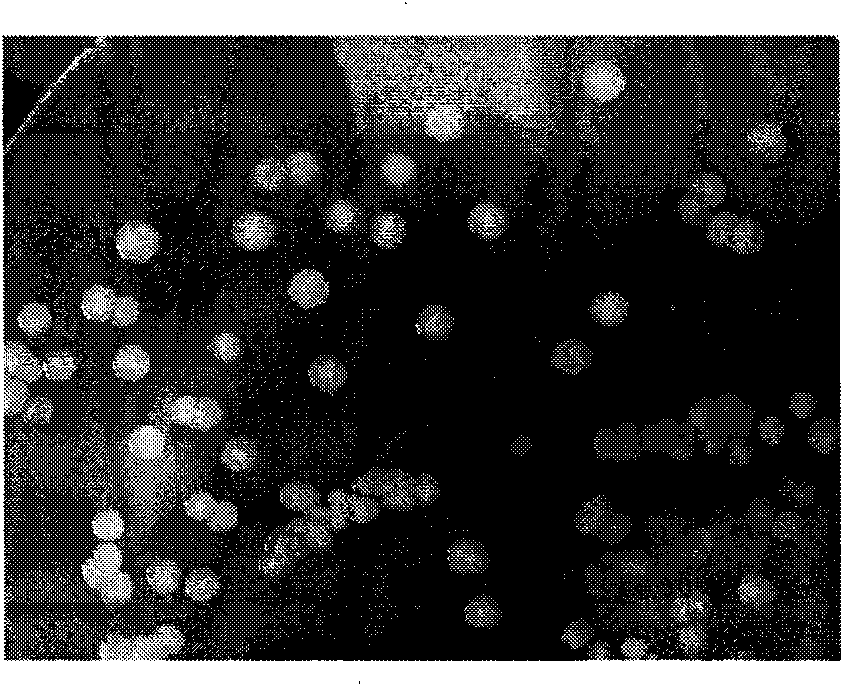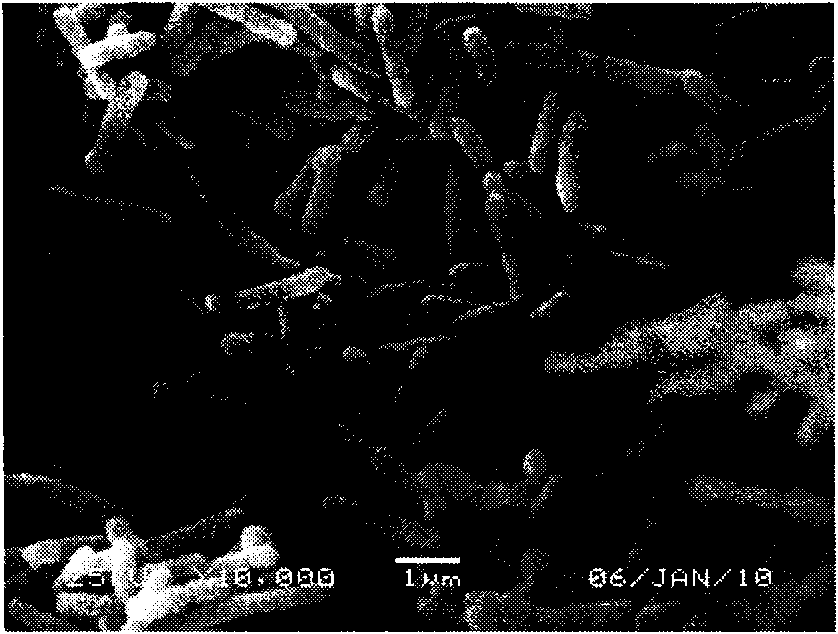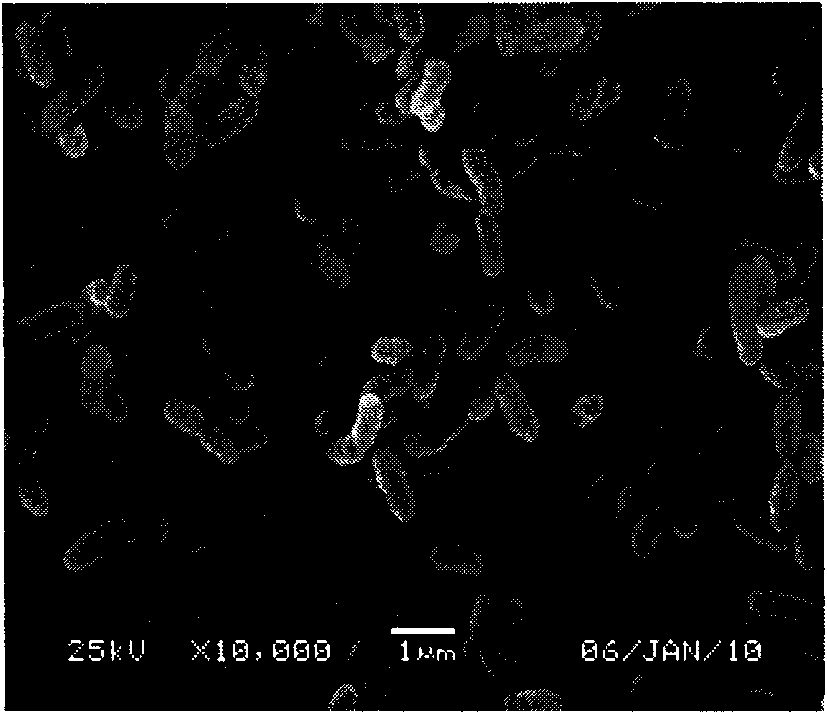High-efficiency strain for degrading polycyclic aromatic hydrocarbon and construction method and application thereof
A polycyclic aromatic hydrocarbon and construction method technology, applied in the direction of microorganism-based methods, biochemical equipment and methods, bacteria, etc., can solve the problems of ineffective degradation, etc., and achieve the effect of simple operation, simple equipment requirements and high adaptability
- Summary
- Abstract
- Description
- Claims
- Application Information
AI Technical Summary
Problems solved by technology
Method used
Image
Examples
Embodiment 1
[0034] In the invention, the protoplasts of Sphingomonas GY2B and Pseudomonas GP3A are firstly prepared and then fused. The following is the specific construction method:
[0035] A. Hypertonic buffer SMM: Add 0.02mol / l maleic acid and 0.02mol / l MgCl to a solution of 0.5mol / l sucrose 2 ·6H 2 O, adjust the pH to 6.5, and sterilize at 121°C for 20 minutes.
[0036] B. Induction solution: Prepared with hypertonic buffer SMM containing polyethylene glycol, CaCl 2 and dimethyl sulfoxide, polyethylene glycol 40% w / v, CaCl 2 10mmol / L, dimethyl sulfoxide 15% v / v, sterilized by 0.45μm membrane filtration, stored at room temperature.
[0037] C. Lysozyme: purchased from BBI company, enzyme activity > 20,000U / mg, weighed 20mg of lysozyme, dissolved in SMM hypertonic fluid, the final concentration was 5mg / ml, sterilized by 0.45μm membrane filtration, at -20 Store at ℃ for later use
[0038] D. Double-antibody interlayer regeneration medium is composed of upper and lower layers of me...
Embodiment 2
[0048] Application of Gram-negative bacteria GY2B and GP3A fusion construction engineering bacteria technology
[0049] As shown in Table 1, F14 can grow on the medium containing 80 μg / ml ceftazidime and 80 μg / ml piperacillin sodium at the same time, but each of the two parental strains cannot. F14 has wider adaptability to environmental conditions than the parent strain. F14 was inoculated in shake flasks with an initial concentration of 100mg / L, and the degradation rate at different temperatures was detected at a speed of 150r / min. The degradation rate of F14 can reach 100.0% at 30°C, 82.9% at 20°C, and 99.7% at 36°C. However, the degradation rate of GY2B is about 50% at 20°C and 35°C. The F14 was inoculated in shake flasks with different initial concentrations, the rotation speed was 150r / min, the temperature was 30°C, and the degradation rate was detected. GY2B degrades phenanthrene with an initial concentration of 230mg / L, and the degradation rate is about 70% at 48h, a...
PUM
 Login to View More
Login to View More Abstract
Description
Claims
Application Information
 Login to View More
Login to View More - R&D
- Intellectual Property
- Life Sciences
- Materials
- Tech Scout
- Unparalleled Data Quality
- Higher Quality Content
- 60% Fewer Hallucinations
Browse by: Latest US Patents, China's latest patents, Technical Efficacy Thesaurus, Application Domain, Technology Topic, Popular Technical Reports.
© 2025 PatSnap. All rights reserved.Legal|Privacy policy|Modern Slavery Act Transparency Statement|Sitemap|About US| Contact US: help@patsnap.com



